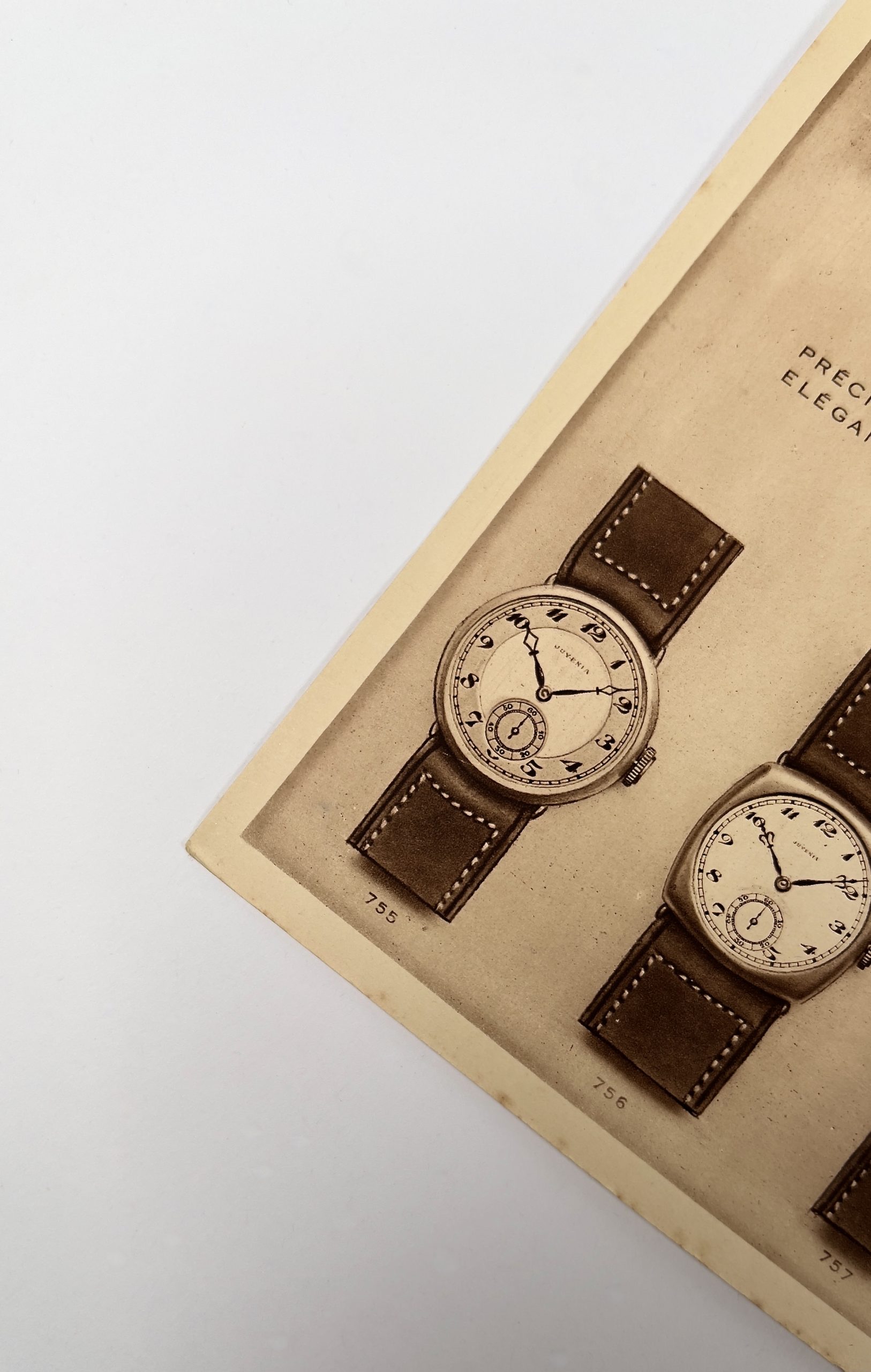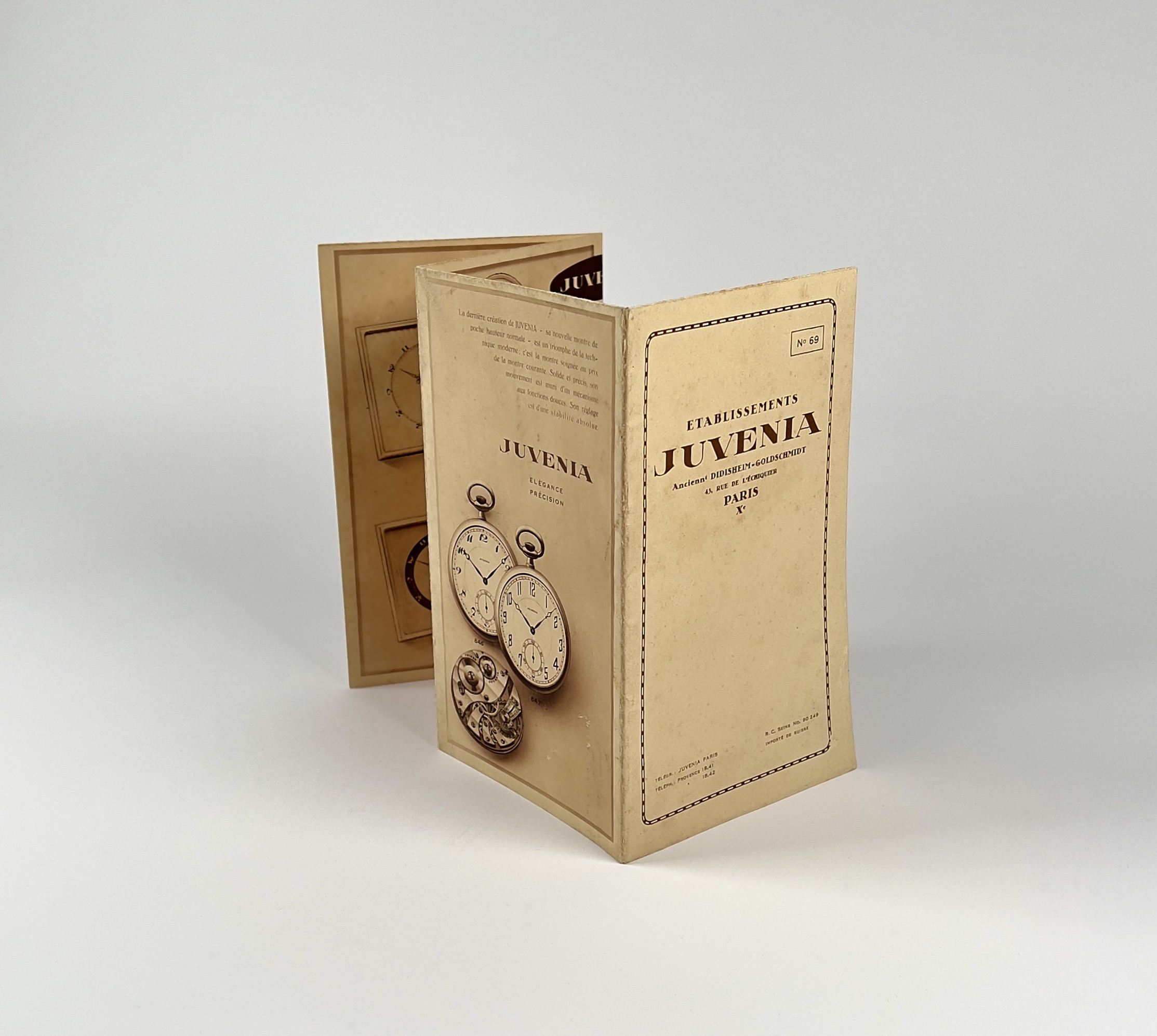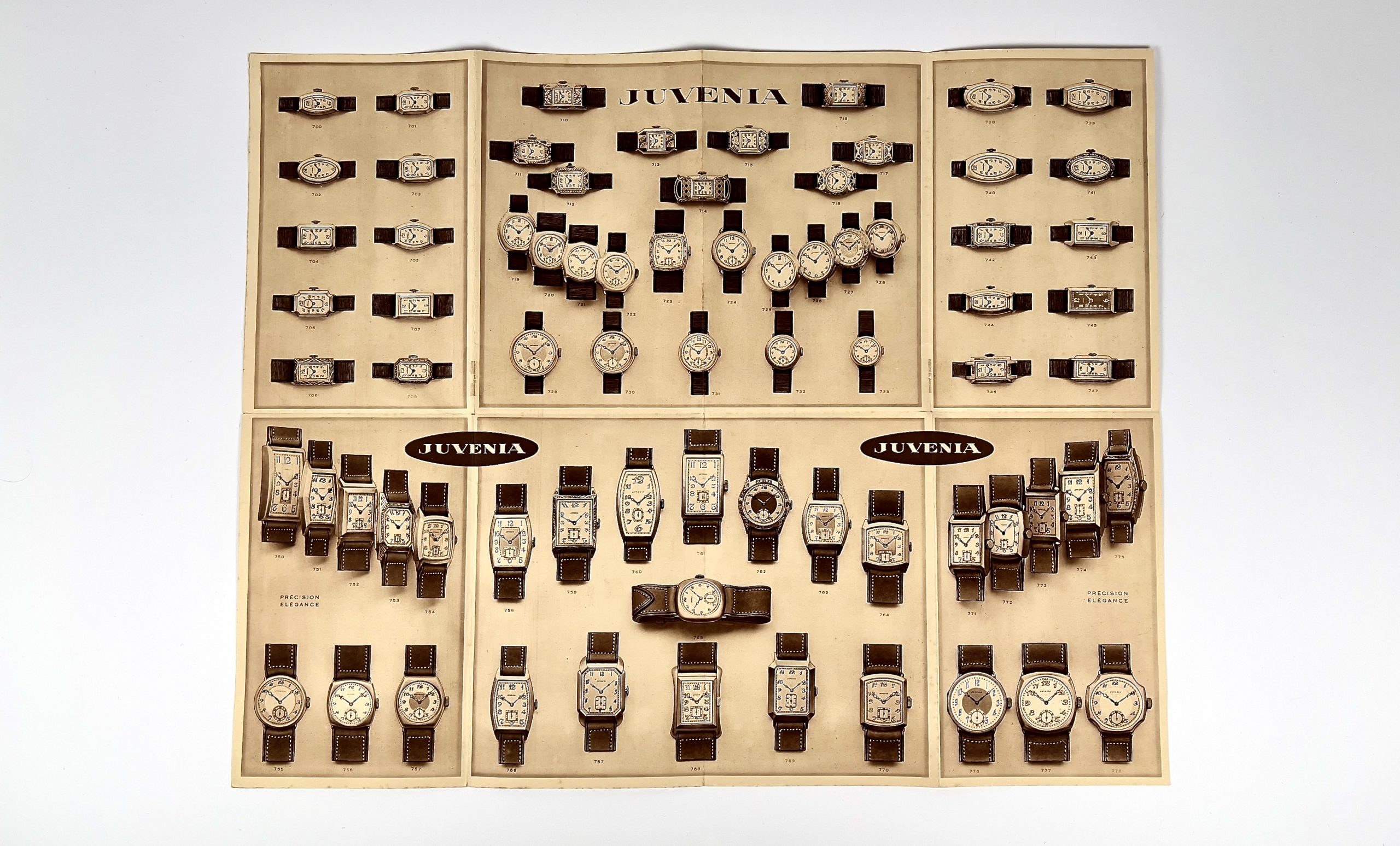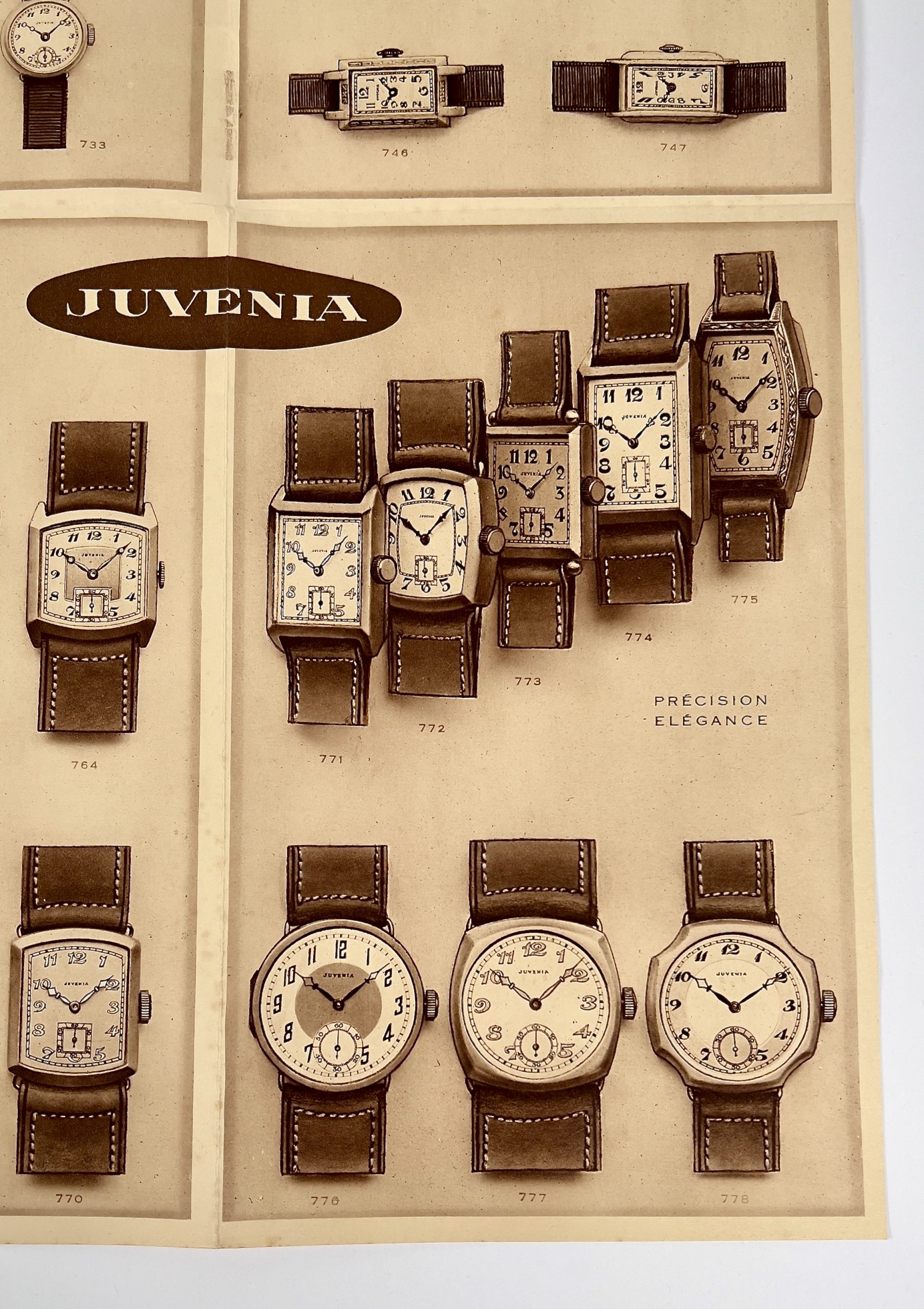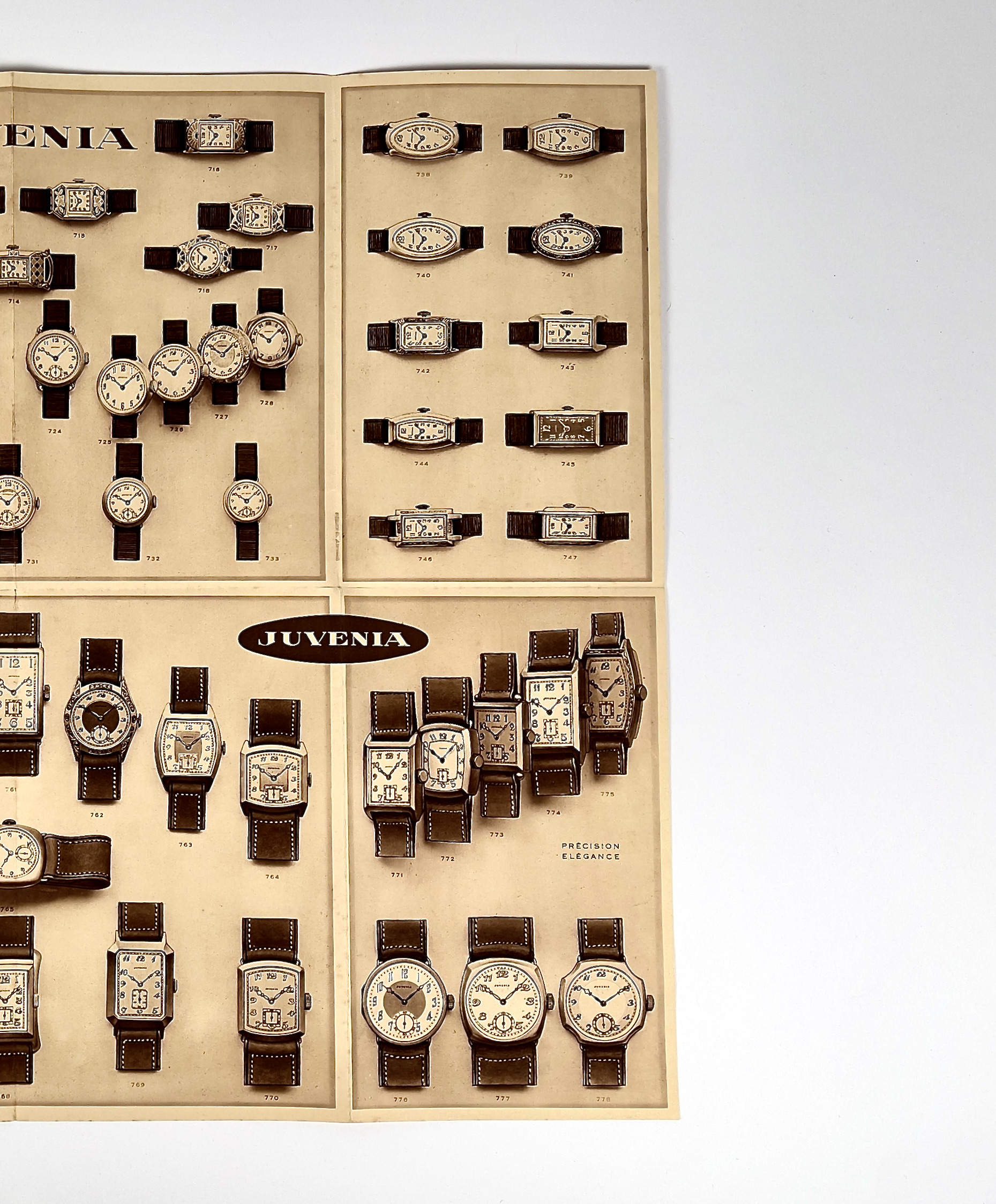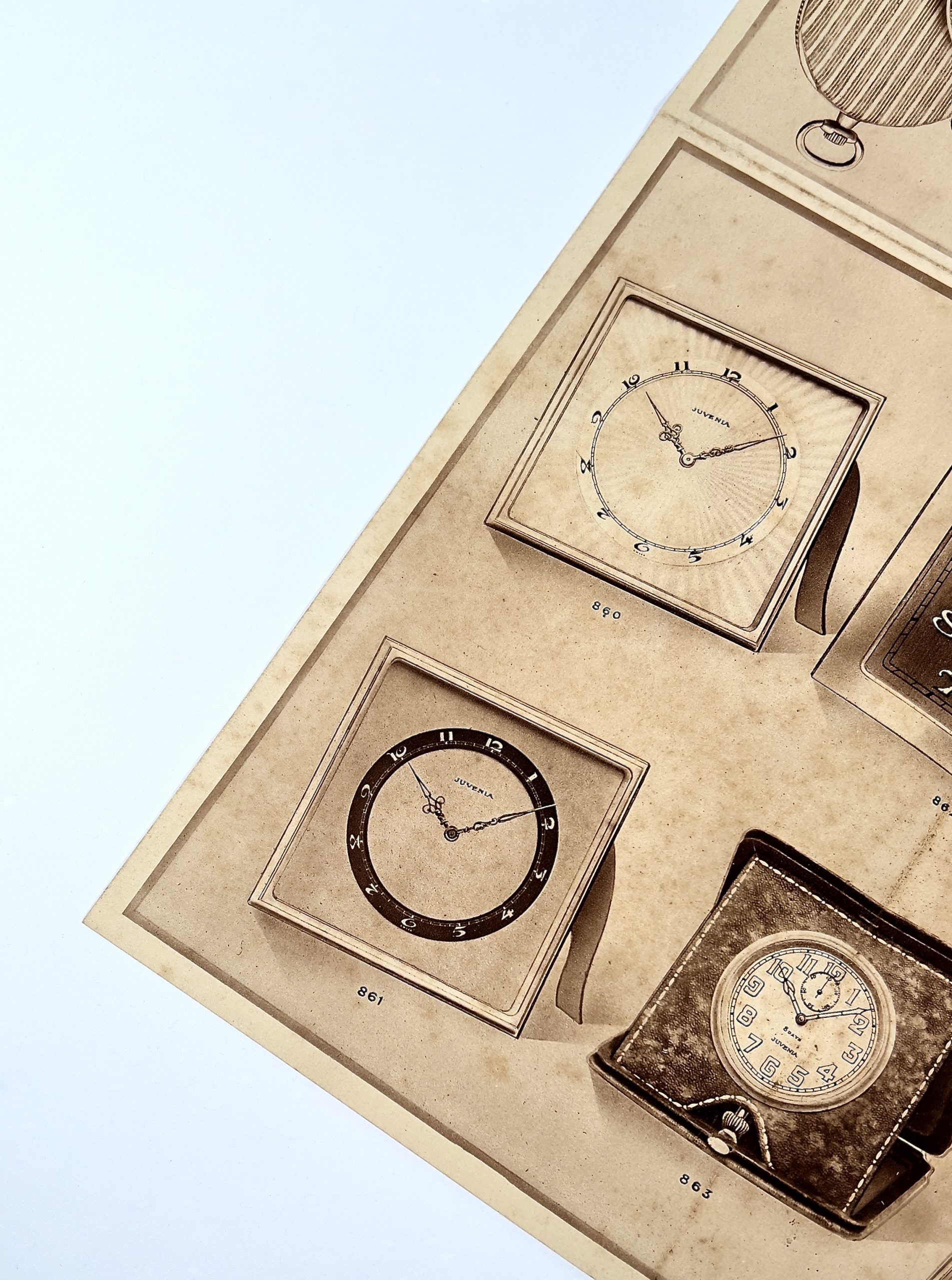-
CATALOG
JUVENILE FACILITIES
CIRCA 1930
-
-
Rare art deco catalog of the Juvenia establishments probably dating from the 1920s or 1930s.
this is a fold-out catalog of juvenia establishments, formerly Didisheim-Goldschmidt, located at the time at 43, rue de l'échiquier in Paris.
In 1860, Jacques Didisheim, a descendant of an Alsatian family and an entrepreneur with a brilliant imagination, founded a watchmaking workshop in Saint-Imier, Switzerland, which he named Juvenia in honor of his wife. A few years later, the factory was re-established in La Chaux-de-Fonds, which offered an ideal location to develop the brand and its activities.
In 1880, Juvenia became one of the first watchmaking companies to manufacture women's wristwatches. The development of a caliber with a cylindrical escapement and a crown winding mechanism made it possible to design smaller movements that could fit inside cases with dimensions specifically adapted to women's wrists. The creation of the winding key was a major innovation for the watch industry.
-
The beginning of the 20th century saw Juvenia flourish with the launch of pocket watches with innovative design and a resolutely modern spirit. The first years of this new century were also marked by a massive expansion with the opening of two boutiques, in Paris and Madrid respectively, only a few decades after its foundation.
Driven by the relentless desire to develop, Juvenia began to design and produce its own range of extra-flat movements in 1908. Aware of the need to manufacture its own calibers in order to be part of the very restricted circle of the great Swiss watchmaking brands, the company began at that time the process of evolution to become a manufacturer in its own right.
-
A hotbed of innovation, Juvenia developed a variety of creations, such as ring watches, pendant watches, table clocks and standing clocks. In the first quarter of the century, their range consisted of a number of important gift items, such as their very successful table clocks. It was an ideal way for artisans to let their imaginations run wild and create richly decorated pieces.
Recognized for its mastery in the art of decorating time, the originality of the house was rewarded with the Grand Prix des Arts Décoratifs de Paris in 1925.
-
Always on the lookout for the latest trends, Juvenia drew inspiration from the popular Art Deco style to design its new Juvenia Sport collection. Comprising several models of hermetically sealed watches, this collection offered a range for men with automatic winding and another for women with simple winding. The shapes of these models allowed the use of various decorative techniques, such as enameling, engraving and leatherwork. An article in the 1930 edition of the Journal Suisse d'Horlogerie emphasized just how successful the collection had been: "Juvenia has succeeded in popularizing pocket and bag watches for both men and women."
-
This catalog is numbered 69 and represents the entire juvenia collection of the time with pocket watches, alarm clocks, wristwatches for men and women. Each model is accompanied by its catalog number.
They detail here their copy of "the latest creation of Juvenia - the new pocket watch of normal height - is a triumph of the modern technique: It is the neat watch at the price of the current watch. Solid and precise, its movement is equipped with a mechanism with soft functions. Its adjustment is of an absolute stability".
The pamphlet is in absolutely incredible condition for its age. it is not corroded or stained. Overall, this paper catalog is in excellent condition with a nice patina slightly pitted by time, as one would expect from a catalog that is now nearly 100 years old.

